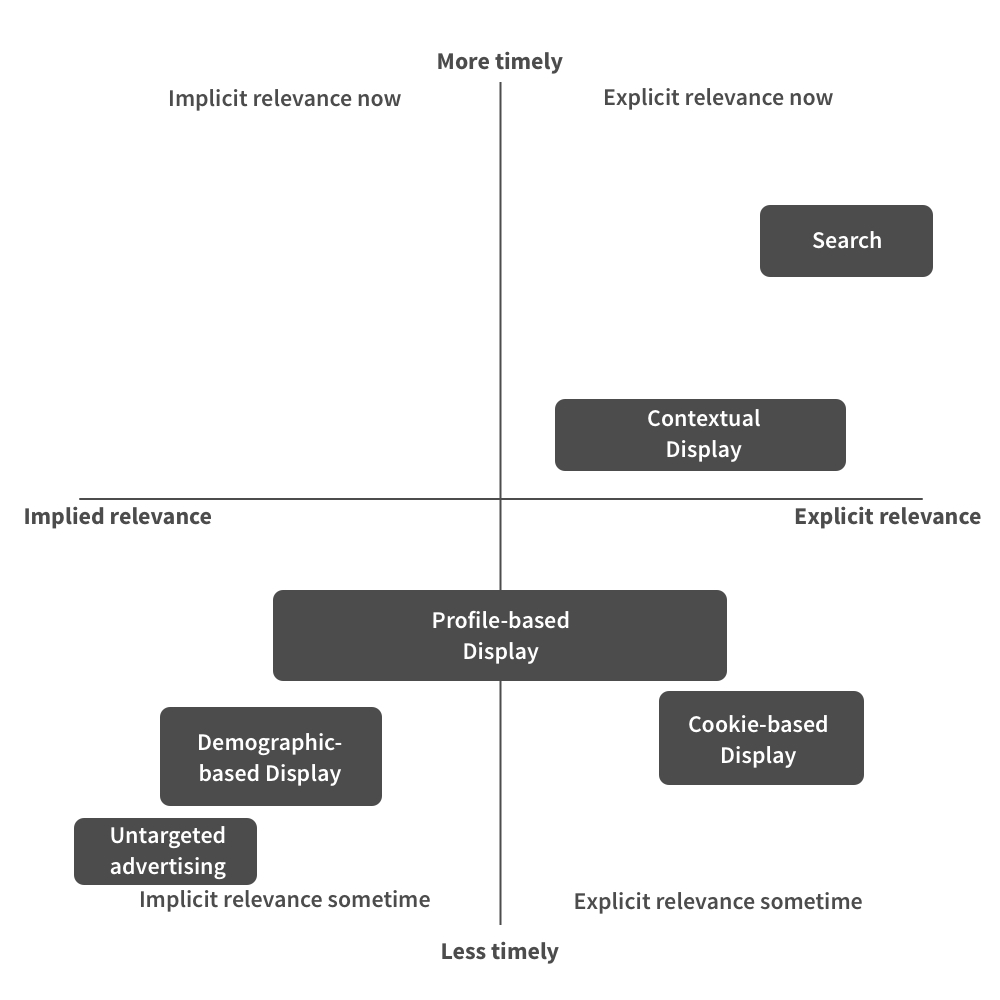I’m making this part of by earnings series, even though Twitter hasn’t actually reported yet, because it hits one of the key points I expect to come up in Twitter’s earnings this week and gets at one of the fundamental concerns I have about Twitter’s growth going forward.
Today, Twitter announced that it would start offering advertisers the ability to serve their promoted tweets off the Twitter platform itself. This is an important step for Twitter because its key growth challenge has been that the number of monthly active users on the platform itself isn’t growing rapidly, and it sees its biggest opportunity in serving what it terms “logged out users,” or those who see tweets without being explicitly logged in to Twitter or one of its apps. This is something I’ve talked about quite a bit here over the last few months, notably here and here. The challenge as I’ve seen it has been that (a) Twitter hadn’t articulated how exactly it would monetize that usage and (b) Twitter can’t use any of the data it has about its users in these third-party contexts, so the advertising would be only minimally targeted.
Today’s announcement gets at the first of these problems, in that it’s the first meaningful articulation of how Twitter can play outside of the core Twitter experience. But it doesn’t solve the second problem. In fact, the way Twitter has chosen to implement the promoted tweet product is a great illustration of how steep a hill Twitter has to climb here. I’m reposting below a chart I’ve used several times here in relation to the effectiveness of advertising:
 What this chart attempts to demonstrate is that there are two characteristics to effective advertising: relevance and timeliness. What makes search advertising so effective is that it hits both of these – i.e. an ad next to search results is relevant now to that user. Most other forms of advertising can at best produce relevance without timeliness, and in some cases neither. The problem with Twitter’s new ad product is that it looks an awful lot like a classic display ad, with little or no connection to the context and with no use of Twitter’s demographic data about the user. It’s likely that these ads will use some targeting from the property on which they appear, assuming those properties have that information, but Twitter itself brings nothing to the table here but the format.
What this chart attempts to demonstrate is that there are two characteristics to effective advertising: relevance and timeliness. What makes search advertising so effective is that it hits both of these – i.e. an ad next to search results is relevant now to that user. Most other forms of advertising can at best produce relevance without timeliness, and in some cases neither. The problem with Twitter’s new ad product is that it looks an awful lot like a classic display ad, with little or no connection to the context and with no use of Twitter’s demographic data about the user. It’s likely that these ads will use some targeting from the property on which they appear, assuming those properties have that information, but Twitter itself brings nothing to the table here but the format.
Twitter makes the argument with regard to Flipboard specifically that the app already shows normal (non-promoted) tweets, so these promoted tweets won’t seem too out of place, but it’s a far cry from seeing a promoted tweet in the midst of a stream of regular tweets in the Twitter app or on Twitter.com. This is at best very loosely native advertising. And very few other properties show enough tweets in native format that these ads won’t look just like another sort of banner ad.
It seems investors don’t mind, at least in the early reactions: the stock is up 6% today. But to my mind nothing about today’s announcement really gets at solving the fundamental problems solving Twitter. We’ll see how this is presented on the earnings call this week, but given this and recent comments from Twitter founders Ev Williams and Jack Dorsey (ironically, in a tweet storm I can’t easily link to because he didn’t post it right), I’m wondering whether this is a pre-emptive strike ahead of another set of poor user growth numbers. Both Williams and Dorsey seem to be saying that we need to be looking beyond Twitter’s actual numbers at the societal impact it has, which seems like a strange thing to say if the numbers are actually going to be any good.